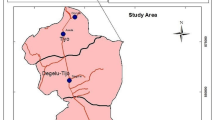Abstract
The aim of this study was to compare the spread of multidrug-resistant (MDR) and methicillin-resistant (MR) staphylococci in healthy dogs and in dogs with evident symptoms of infection. The samples from 172 healthy and 197 infected dogs were examined. The staphylococci were identified with conventional methods and by means of the polymerase chain reaction–restriction fragment length polymorphism (PCR–RFLP) method (MboI). Susceptibility to 15 antibiotics from 10 different antimicrobial classes was tested. Resistance to methicillin was confirmed by the presence of Staphylococcus aureus mecA and S. sciuri mecA genes. Multidrug resistance was defined as resistance to three or more antimicrobial classes. The oral mucosa to be the most frequent site of staphylococcal colonization (55.8 %), followed by nasal cavity (44.2 %), and anus (32.6 %). The prevalence of MDR staphylococci in infected dogs was significantly higher than in the healthy animals (74/137 vs. 34/95, P = 0.006). The MR strains of S. pseudintermedius (2.9 %) originated solely from infected dogs. In contrast, the MR coagulase-negative strains (7.4 %) were isolated solely from healthy dogs. S. aureus strains originated from nasal swabs, MRSA strains were not isolated. MDR staphylococci and MR S. pseudintermedius are more common among infected dogs, but coagulase-negative staphylococci (mostly S. sciuri) seem to be a reservoir of methicillin resistance in healthy dogs.
Similar content being viewed by others
References
Bannoehr J, Franco A, Iurescia M, Battisti A, Fitzgerald JR (2009) Molecular diagnostic identification of Staphylococcus pseudintermedius. J Clin Microbiol 47:469–471
Bannoehr J, Guardabassi L (2012) Staphylococcus pseudintermedius in the dog: taxonomy, diagnostics, ecology, epidemiology and pathogenicity. Vet Dermatol 23:e252–e253
Bond R, Loeffler A (2012) What’s happened to Staphylococcus intermedius? Taxonomic revision and emergence of multi-drug resistance. J Small Anim Pract 53:147–154
Carson M, Meredith AL, Shaw DJ, Giotis ES, Lloyd DH, Loeffler A (2012) Foxes as a potential wildlife reservoir for mecA-positive staphylococci. Vector Borne Zoonotic Dis 12:583–587
Clinical and Laboratory Standards Institute (2008) Performance standards for antimicrobial disk and dilution susceptibility test for bacteria isolated from animals: approved standard, 3rd ed. M31-A3, vol. 28, no. 8
Couto I, Sanches IS, Sa-Leao R, de Lencastre H (2000) Molecular characterization of Staphylococcus sciuri strains isolated from humans. J Clin Microbiol 38:1136–1143
Griffeth GC, Morris DO, Abraham JL, Shofer FS, Rankin SC (2008) Screening for skin carriage of methicillin-resistant coagulase-positive staphylococci and Staphylococcus schleiferi in dogs with healthy and inflamed skin. Vet Dermatol 19:142–149
Haenni M, Chatre P, Boisset S, Carricajo A, Bes M, Laurent F, Madec JY (2011) Staphylococcal nasal carriage in calves: multiresistant Staphylococcus sciuri and immune evasion cluster (IEC) genes in methicillin-resistant Staphylococcus aureus ST398. J Antimicrob Chemother 66:1927–1928
Hartmann FA, White DG, West SE, Walker RD, Deboer DJ (2005) Molecular characterization of Staphylococcus intermedius carriage by healthy dogs and comparison of antimicrobial susceptibility patterns to isolates from dogs with pyoderma. Vet Microbiol 108:119–131
Hauschild T, Wojcik A (2007) Species distribution and properties of staphylococci from canine dermatitis. Res Vet Sci 82:1–6
Huerta B, Maldonado A, Ginel PJ, Tarradas C, Gomez-Gascon L, Astorga RJ, Luque I (2011) Risk factors associated with the antimicrobial resistance of staphylococci in canine pyoderma. Vet Microbiol 150:302–308
Murakami K, Minamide W, Wada K, Nakamura E, Teraoka H, Watanabe S (1991) Identification of methicillin-resistant strains of staphylococci by polymerase chain reaction. J Clin Microbiol 29:2240–2244
Penna B, Varges R, Medeiros L, Martins GM, Martins RR, Lilenbaum W (2010) Species distribution and antimicrobial susceptibility of staphylococci isolated from canine otitis externa. Vet Dermatol 21:292–296
Piechowicz L, Garbacz K, Galiński J (2008) Staphylococcus aureus of phage type 187 isolated from people occurred to be a genes carrier of eneterotoxin C and toxic shock syndrome toxin-1 (TSST-1). Int J Hyg Environ Health 211:273–282
Severin JA, Lestari ES, Kuntaman K, Pastink M, Snijders SV, Lemmens-den Toom N, Horst-Kreft D, Hadi U, Duerink DO, Goessens WH, Fluit AC, van Wamel W, van Belkum A, Verbrugh HA, AMRIN Study Group (2010) Nasal carriage of methicillin-resistant and methicillin-sensitive strains of Staphylococcus sciuri in the Indonesian population. Antimicrob Agents Chemother 54:5413–5417
Stepanović S, Dimitrijević V, Vuković D, Dakić I, Savić B, Svabic-Vlahović M (2001) Staphylococcus sciuri as a part of skin, nasal and oral flora in healthy dogs. Vet Microbiol 82:177–185
Vanderhaeghen W, Vandendriessche S, Crombé F, Dispas M, Denis O, Hermans K, Haesebrouck F, Butaye P (2012) Species and staphylococcal cassette chromosome mec (SCCmec) diversity among methicillin-resistant non-Staphylococcus aureus staphylococci isolated from pigs. Vet Microbiol 158:123–128
Vengust M, Anderson ME, Rousseau J, Weese JS (2006) Methicillin-resistant staphylococcal colonization in clinically normal dogs and horses in the community. Lett Appl Microbiol 43:602–606
Wertheim HF, Melles DC, Vos MC, van Leeuwen W, van Belkum A, Verbrugh HA, Nouwen JL (2005) The role of nasal carriage in Staphylococcus aureus infections. Lancet Infect Dis 5:751–762
Yoon JW, Lee KJ, Lee SY, Chae MJ, Park JK, Yoo JH, Park HM (2010) Antibiotic resistance profiles of Staphylococcus pseudintermedius isolates from canine patients in Korea. J Microbiol Biotechnol 20:1764–1768
Author information
Authors and Affiliations
Corresponding author
Rights and permissions
About this article
Cite this article
Garbacz, K., Żarnowska, S., Piechowicz, L. et al. Staphylococci Isolated from Carriage Sites and Infected Sites of Dogs as a Reservoir of Multidrug Resistance and Methicillin Resistance. Curr Microbiol 66, 169–173 (2013). https://doi.org/10.1007/s00284-012-0254-9
Received:
Accepted:
Published:
Issue Date:
DOI: https://doi.org/10.1007/s00284-012-0254-9




